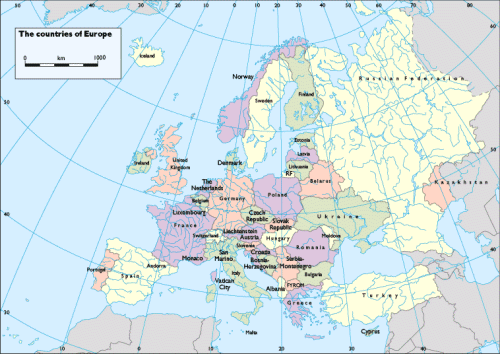The report is aimed at all those concerned
with the environment professionally, as well as those with a more
general interest. It is intended to provide an objective basis for
planners and developers involved in policy making and programming in
environment and sectorial fields. It should also serve to inform and
raise awareness generally about environmental problems facing Europe
today.
This overview has been produced to help make
the report accessible, introducing some of the main findings and
results which have been reached.
Background to the report
The United Nations Conference on Environment and Development
(UNCED), convened in June 1992, stressed that a new responsibility for
environmental protection had to be shared by all countries if
sustainable development were to become a reality. UNCED's action plan,
'Agenda 21', outlines the actions needed to halt and reverse
environmental degradation and bring about sustainable development in
all countries.
These concerns have also been the subject of a series of European
initiatives. The Bergen Ministerial Conference (May 1990) on
sustainable development in the ECE region emphasized the need to
improve reporting on the state of the environment. Prompted by the
changes occurring in Central and Eastern Europe, a joint meeting of
environment ministers from this region, the EU and EFTA was held in
Dublin in June 1990. This meeting produced the idea of holding regular
European ministerial conferences to address environmental matters. The
first of these 'pan-European' conferences took place in Dobris Castle
in the former Czechoslovakia in June 1991. It was at this conference
that the present report on the state of the European environment was
called for. The second conference was held in Lucerne (1993) and the
third is scheduled for 1995 in Sofia, with the aim of adopting an
Environmental Programme for Europe (EPE) for which this report is a
basic input.
Form of the report
The report is presented in several parts. Part I introduces the
context and the reporting techniques used. Part II assesses the state
of the environment in eight different fields. Part III examines the
pressures which impact the environment and Part IV describes the
sources of these pressures - human activities - in eight different
sectors. Part V summarizes twelve major environmental problems in
Europe. The major highlights of the report are concluded in Part VI,
summarizing for each theme important findings, responses and policy
options, information strengths and gaps. A statistical compendium to
the report is published separately by Eurostat.
The countries of Europe
|

|
|
Albania
Andorra
Austria
Belarus
Belgium
Bosnia-Herzegovina
Bulgaria
Croatia
Cyprus
Czech Republic
Denmark
Estonia
Finland
France
FYROM
|
Germany
Greece
Hungary
Iceland
Ireland
Italy
Kazakhstan (partly)
Latvia
Liechtenstein
Lithuania
Luxembourg
Malta
Moldova
Monaco
Netherlands
|
Norway
Poland
Portugal
Romania
Russian Federation (partly)
San Marino
Serbia-Montenegro
Slovak Republic
Slovenia
Spain
Sweden
Switzerland
Turkey (partly)
Ukraine
United Kingdom
Vatican City
|

Document Actions
Share with others